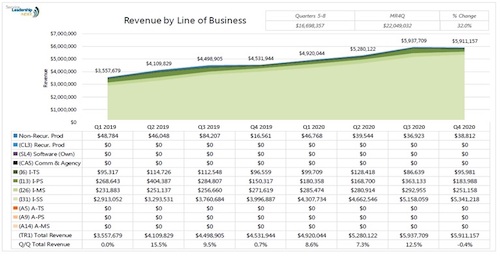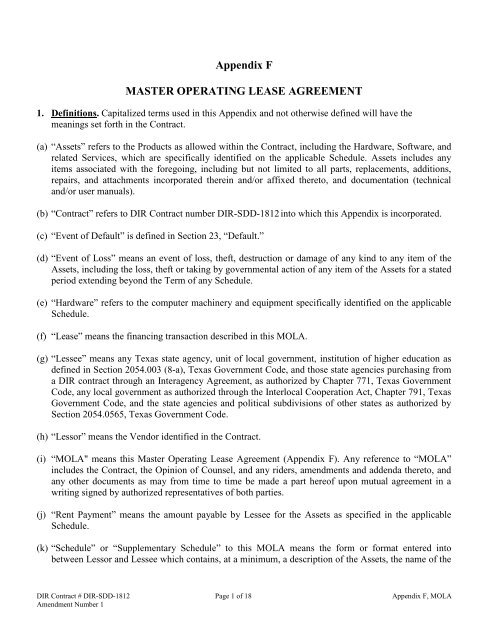Overtime pay calculation

Usually, keeping overtime within 5-10% of total hours worked is a reasonable goal for maintaining productivity and work-life balance. As mentioned before, depending on the employee classification, he could be eligible or not for overtime pay. It’s important to note that the specific rules for overtime pay can vary based on jurisdiction and employment agreements.
The federal government established this as law in the Fair Labor Standards Act (FLSA) of 1940. Before that, employers could require their employees to work any number of hours at their regular pay rate. Thus, your overtime pay is equal to the normal hourly pay rate multiplied by the overtime multiplier paid by your employer, and then multiplied by the number of hours of overtime that you worked. The retention bonus must be included in the regular rate calculation in overtime weeks covered by the bonus period. The retention bonus described above was earned over six months or 26 weeks.
The Eight and Eighty (8 and Overtime System
Double overtime may be owed if employees work more than 12 hours a day. However, laws can vary by state or by the agreement signed when accepting employment, so double overtime may not always apply. Some companies pay 2.5 times the standard rate for overtime and sometimes even more. Within the United States, the different states may have their own legislation regarding OT. Since the straight-time earnings have already been calculated (see Step 1), the additional amount to be calculated is one-half the regular rate of pay. It’s important to note that overtime pay eligibility varies by state, industry, and job classification.
Marvel VFX Workers Fight to Change Company’s ‘Live at Work’ Culture – Rolling Stone
Marvel VFX Workers Fight to Change Company’s ‘Live at Work’ Culture.
Posted: Wed, 16 Aug 2023 13:57:25 GMT [source]
Overtime pay is typically calculated at 1.5 times the employee’s regular pay rate. To calculate their overtime pay, it is necessary to establish their regular hourly rate by dividing their weekly salary by the expected number of hours in a week. When employees work overtime, their pay rate is 1.5 times their regular hourly rate. Multiply the number of overtime hours by the calculated overtime rate, which is usually 1.5 times the regular hourly wage. If you pay a salaried employee on a weekly basis, calculating overtime wages will look the examples above.
Example 3: Employee with multiple pay rates
An employee’s regular rate includes their hourly rate as well as the value of nondiscretionary bonuses, shift differentials, and certain other forms of compensation. Once you’ve determined their regular hourly rate, you can follow the rest of the steps for calculating overtime pay for hourly employees. The standard overtime rate is usually 1.5 times the regular hourly wage. However, again, check local labor laws or company policies to confirm the correct rate.
The additional half-time must be computed based on the regular rate of pay. The regular rate is defined as the total remuneration divided by the total hours worked. The assistant earned a total of $408 for the 48 hours that she worked ($8 an hour times 24 hours plus $9 an hour times 24 hours). Overtime pay for salaried employees can seem tricky to calculate, but it’s actually fairly simple. One way to do it is to divide their weekly pay by the number of hours they work in a week.
Nearly $900,000 spent on Nuggets parade and celebration – 9News.com KUSA
Nearly $900,000 spent on Nuggets parade and celebration.
Posted: Fri, 28 Jul 2023 07:00:00 GMT [source]
You can do this with our salary to hourly calculator, or simply divide their weekly pay by the number of hours they work per week. Time and a half means the overtime rate is 1.5 times the worker’s normal pay rate. In other words, the worker will receive an hourly rate that is 50% higher than their normal rate for each hour of overtime. Whether you are eligible for overtime pay depends on the nature of your job, the state’s law in which you work, and how many hours you have worked in a given week.
So, if your business’s pay period is biweekly, break that down into weekly chunks. Hourly employees who work for more than 40 hours over a seven-day timespan must receive overtime. It requires that eligible workers who work more than a 40-hour week be paid 1.5 times their base pay rate for every hour worked over their usual amount. This doesn’t necessarily apply to work performed on nights, weekends, and holidays, unless mentioned in the employment agreement—or if those hours are also in excess of 40 for that week.
Total Straight Time (ST) Compensation:
Armed with that information, you can revise the schedule — who works when and for how long — so that each shift is covered and no one employee strays into overtime territory. The right employee management software can often How to calculate overtime pay give you a real-time view of how much each shift will cost your business. A big part of learning how to calculate overtime correctly is understanding where and how it fits into the larger framework of your payroll process.

Alternatively, you can simply switch to an automated payroll system that does all the heavy lifting for you. Automated payroll systems are easy to set up and use, and they provide accurate calculations of OT pay in an instant. With remote work and flexible schedules becoming the new norm, you’ll need to know how to account for varying workweeks. Outside sales employees are exempt if their primary duty is making sales or obtaining orders away from the employer’s place of business.
Billing time
But the specific provisions of overtime pay may vary based on employment classification, with hourly and salaried employees typically treated differently. Overtime rules and regulations are the established labor laws that determine how nonexempt employees are compensated for working beyond standard work hours. Calculating overtime for multiple pay rates is more complex than the hourly employees and involves adding up all the hours the employee has worked at each rate. Then, you determine the total pay for each rate by multiplying the hours worked by that rate. In fact, if an employee’s regular pay rate is $15/hour, you might end up paying $1,000 or more in overtime if you allow just 15 minutes extra every day.
- The standard overtime rate is usually 1.5 times the regular hourly wage.
- However, the U.S. government had instituted eight-hour days for its employees as early as 1869.
- Once you’ve determined their regular hourly rate, you can follow the rest of the steps for calculating overtime pay for hourly employees.
- The FLSA does not require overtime pay for hours in excess of eight hours worked in a day, except as discussed below, or for hours worked on Saturdays, Sundays, or holidays.
- The company’s standard workweek is 40 hours, and overtime pay is calculated at 1.5 times the regular hourly rate.
- Many exempt jobs fall in the first category only, with managerial and executive positions often exempt from overtime.
Navigating the complexities of overtime pay can feel like strolling through a maze of regulations. Whether you’re a business owner or a team manager, ensuring you comply with the rules while fairly compensating your employees can feel daunting. For the majority of the methods for calculating overtime, you’ll use formula one (the 1.5 overtime multiplier). But let’s see how to calculate overtime using total hours worked and formula two.
And if you want to save yourself all that hassle, our services here at Inova can help. Whether you’re a company of one or a sprawling multi-state organization with more than 1,000 employees, our all-in-one payroll platform handles the heavy lifting for you, from pre-hire to retire. However, it’s important to note that overtime calculation methods vary by region and industry. Some states may have provisions for daily overtime or other variations. Some states may have different overtime thresholds or rates, and certain industries may have unique regulations. Save countless hours scheduling employees while controlling quality of their work and reducing cost of labor.

During major U.S. holidays (e.g., Christmas, Thanksgiving, and New Year’s Day), some businesses pay “double time” (or twice the regular rate) for any overtime hours worked. Businesses that pay their employees a salary (as opposed to an hourly rate) typically classify those employees as exempt — meaning that they’re not eligible for overtime. Some states have additional overtime laws that require you to pay an employee overtime after working 8 or 12 hours in a day. Usually the overtime rate is time-and-a-half, so multiply the regular hourly rate by 1.5.
The last alternative for calculating overtime requires the prior approval of the affected employee. The best way to earn additional income with overtime is to work hard and be a productive employee at your job. Your employer will see that you are one of the best performers in the job and want to give you more work. Then, use the OT formula above to calculate overtime just like you would for an hourly employee.
- One of the most important things to remember about overtime is that it’s calculated differently for people on salary than for people paid hourly.
- Download QuickBooks today to see how our payroll and other business accounting solutions can help your business excel.
- Our software even allows you to export timesheets for streamlined wage payment every time (whether you DIY or outsource it to a payroll processing company).
- Overtime can be complicated, so it’s no wonder that many employers make mistakes.
Under federal law, to calculate a nonexempt employee’s regular rate of pay, divide the weekly salary by the total number of hours worked. Suppose we have a salaried employee named Sarah, who earns $800 per week and is classified as a non-exempt employee. The company’s standard workweek is 40 hours, and overtime pay is calculated at 1.5 times the regular hourly rate. Calculating overtime pay for salaried employees can be a bit more complex than for hourly employees. Salaried employees receive a fixed salary, regardless of the number of hours they work. However, they might still be eligible for overtime pay under certain circumstances, especially if they are classified as non-exempt employees according to labor laws.

Certain states may require that employers pay an overtime rate on some holidays, however. Overtime pay refers to the additional compensation provided to an employee for working beyond their regular working hours, which are typically set by labor laws or the employer. It is a form of financial incentive aimed at compensating employees for their extra effort and dedication when they work more than the standard number of hours in a workweek or workday. In the following sections, I will break down the steps to calculate overtime pay for both hourly and salaried employees, providing practical examples to illustrate each scenario. Overtime calculations can be highly complex and may depend on factors such as state or local laws and regulations.
This is done by dividing their weekly salary by the number of hours in the standard workweek. Often, employers may just accidentally pay the employee’s regular rate for their weekly salary, forgetting to account for overtime hours. That’s why keeping track of your employees’ hours of work in each pay period—as well as exemptions, double time, and state and federal laws—is critical. The federal Fair Labor Standards Act (FLSA) requires employers to pay non-exempt employees 1.5 times their “regular rate of pay” for all hours worked over 40 in a workweek. Some states require overtime pay in additional circumstances and at different rates.

